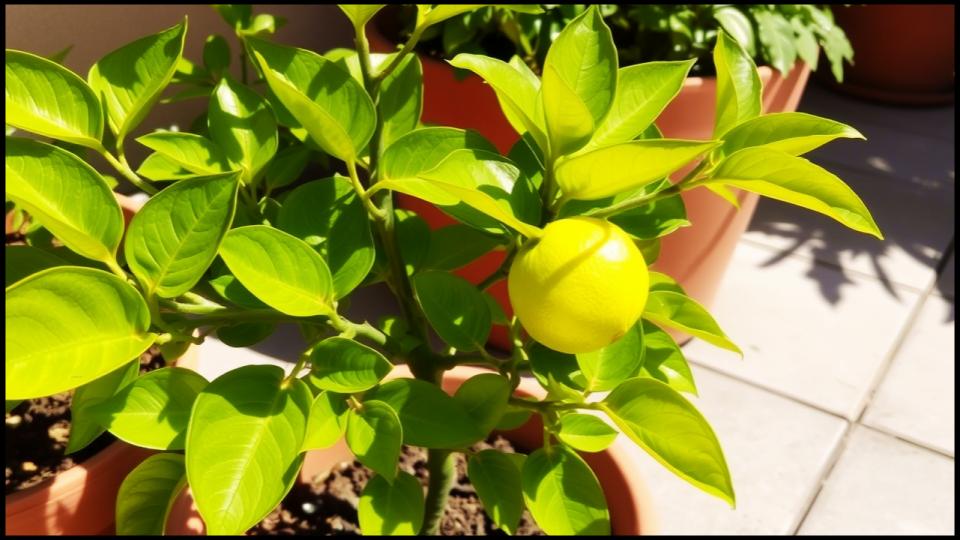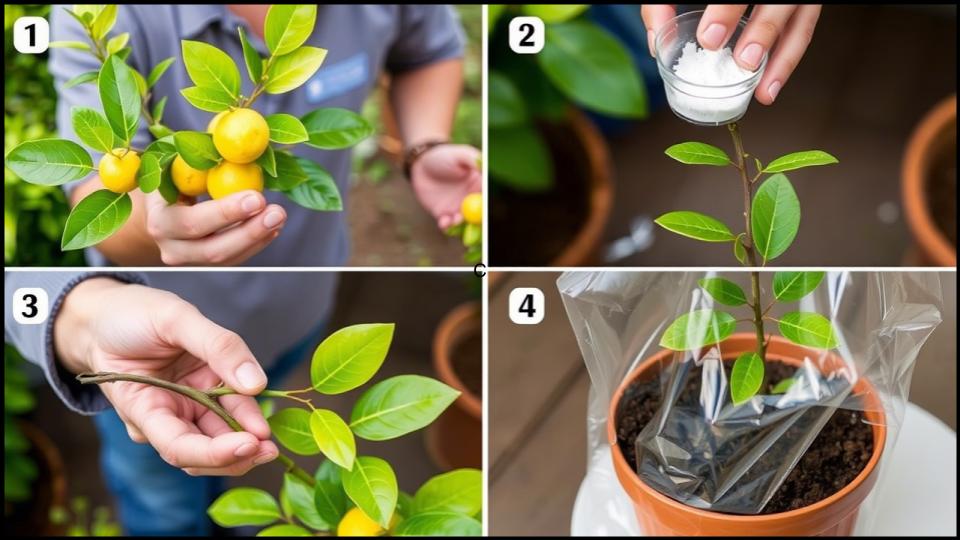
There is something profoundly satisfying about snipping a fresh lemon from a tree you’ve nurtured yourself. The bright, zesty fragrance that fills the air is more than just a scent; it’s the smell of success. Imagine capturing that magic not just once, but creating a legacy of citrus from a single, beloved tree. Learning how to propagate a lemon tree is the key to this delightful sustainability. It’s a timeless gardening skill that empowers you to replicate a favorite tree, share the gift of citrus with friends, and ensure you have a steady supply for lemonade, desserts, and cocktails for years to come. Let’s walk through the simple, elegant process of creating new life from old.
Key Insights for Your Citrus Journey
Here is what you need to know to successfully propagate your own lemon tree.
- Cuttings Are Clones: To get a tree identical to the parent (with the same delicious fruit), you must propagate from cuttings.
- Patience with Seeds: Growing lemon trees from seed is a fun project, but the resulting tree will be a genetic surprise and can take many years to fruit, if at all.
- Timing is Everything: Take your lemon tree cuttings from new growth during late spring or early summer for the highest chance of success.
- Warmth and Humidity: Young cuttings need a warm, humid environment to sprout roots. Think of it as a mini-greenhouse.
Why Propagate a Lemon Tree? The Joy of Infinite Citrus
Beyond the practical benefit of more fruit, propagating a lemon tree connects us to the ancient rhythm of horticulture. When you take a cutting, you are essentially creating a perfect clone of the parent plant. Is your Meyer lemon exceptionally sweet? Does your Eureka produce the perfect tart fruit for a pie? Propagation ensures those exact qualities continue. In my own garden, I have a row of lemon trees that all started from a single plant gifted to me years ago; each one is a living memory of that original tree.
This practice, often called citrus propagation, is also the most generous of gardening acts. A successfully rooted cutting in a handsome pot is one of the most thoughtful gifts you can give—a symbol of growth and friendship that will flourish for years. It’s an elegant, sustainable way to fill your home and the homes of your loved ones with beauty and fragrance.

Two Paths to a New Tree: Seed vs. Cutting
Before you begin, it’s important to understand the two primary methods for creating a new lemon tree and to choose the path that aligns with your goals.
The Sure Thing: Propagating from Cuttings
This is the method preferred by horticulturists for one simple reason: genetic consistency. A cutting is a piece of the parent plant that, when encouraged to root, grows into a new plant that is genetically identical. According to the University of Florida IFAS, this vegetative propagation is the standard for ensuring the fruit quality and disease resistance of the parent are preserved.
- Pros: Produces a true-to-type clone of the parent tree. The new tree will mature and fruit much faster (typically within 2-3 years).
- Cons: Requires a bit more initial technique than planting a seed.
The Genetic Lottery: Growing from Seed
Planting a seed from a store-bought or homegrown lemon is an easy and enjoyable experiment, especially for children. However, it’s crucial to know that citrus grown from seed is not “true to type.” The resulting plant will be a genetic hybrid of its parent and the plant that pollinated it, much like a child is not an exact copy of its parents.
- Pros: Very easy to start.
- Cons: The fruit (if any) will likely be different from the parent lemon, and often inferior. It can take a very long time—8 to 15 years—for a seed-grown tree to mature enough to produce fruit, as noted by experts at the Purdue University Cooperative Extension Service.
For these reasons, we’ll focus on the professional method: lemon tree cuttings.
The Art of Propagation: How to Propagate a Lemon Tree from Cuttings
Here is where the real magic happens. With a few simple tools and a little patience, you can turn a single branch into a thriving new tree. A common mistake I see is gardeners attempting this in the wrong season; timing is your most important ally here.
When to Take Your Cuttings
The ideal time to take cuttings is in late spring or early summer when the tree is actively growing. You’re looking for what’s called “semi-hardwood”—stems from the current season’s growth that are beginning to mature. They should be firm but still flexible, easily snapping when bent sharply. Avoid the soft, bright green new tips and the old, woody grey branches.
Tools and Materials
Gathering your supplies beforehand makes the process smooth and enjoyable. [TOOLS AND MATERIALS BOX:
- Sharp, sterile pruning shears or a knife: A clean cut prevents disease. Wipe the blade with isopropyl alcohol between cuts.
- Rooting hormone: Available as a powder or gel, this significantly increases your success rate by stimulating root growth.
- Small pots (4-6 inches): Ensure they have excellent drainage holes.
- Potting mix: A sterile, well-draining mix is crucial. A 50/50 blend of perlite and peat moss or coco coir is perfect.
- A clear plastic bag or dome: To create a humid micro-environment.
- A healthy parent lemon tree: Choose a vigorous, disease-free plant.]
Step-by-Step: From Branch to Budding Plant
- Select and Cut the Branch: Choose a healthy, pencil-sized branch. Take a cutting that is 6-8 inches long, making your cut just below a leaf node (the small bump where a leaf emerges).
- Prepare the Cutting: Carefully remove all the leaves from the bottom half of the cutting. This is where the roots will form, and removing leaves prevents rot. You can also snip the remaining large leaves in half horizontally to reduce moisture loss.
- Apply Rooting Hormone: Pour a small amount of rooting hormone powder onto a paper plate. Moisten the bottom inch of your cutting with water and dip it into the powder, gently tapping off any excess. This step provides the essential hormones the cutting needs to signal root development.
- Plant the Cutting: Fill your pot with the pre-moistened potting mix. Use a pencil or your finger to poke a hole in the center. Gently insert the powdered end of the cutting into the hole, ensuring the nodes where you removed leaves are below the soil surface. Firm the soil around it.
- Create a Humid Haven: Water the cutting gently. Cover the pot with a clear plastic bag or a plastic dome, making sure the plastic doesn’t touch the leaves. This traps humidity, which is essential for root formation. I find that a bamboo skewer placed in the pot can help hold the bag up.
- Provide Light and Warmth: Place the pot in a warm location with bright, indirect light. A spot near a window but out of the direct sun is ideal. The goal is to keep the soil consistently moist but not waterlogged.
- Be Patient: Roots can take anywhere from 4 to 8 weeks to develop. You can check for root growth by very gently tugging on the cutting. If you feel resistance, it’s a sign that roots have formed. You may also see new leaf growth, which is a wonderful indicator of success.

Nurturing Your New Arrival
Once your cutting has developed a healthy root system (you may even see roots peeking out of the drainage holes), it’s time to acclimate it to life outside its humid dome.
- Hardening Off: Gradually remove the plastic cover for a few hours each day, increasing the time over a week. This “hardens off” the young plant, allowing it to adjust to lower humidity levels.
- Watering: Young lemon trees need consistent moisture. Water thoroughly when the top inch of soil feels dry to the touch.
- Fertilizing: Wait until you see a few sets of new, active leaf growth before you begin to fertilize. Start with a balanced liquid fertilizer diluted to half-strength every 4-6 weeks during the growing season.
- Repotting: After about a year, your new lemon tree will likely be ready for a slightly larger pot. Choose one that is only 2-3 inches wider in diameter.
A Zest for Life
Learning to propagate a lemon tree is more than just a gardening project; it’s an investment in the future of your garden and home. You’ve taken a piece of a plant you love and created something new, vibrant, and full of potential. With these steps, you’ve moved beyond simply caring for a plant to actively participating in its life cycle. You are now equipped with the knowledge to create and share this wonderful gift. As your new tree grows, it will serve as a beautiful reminder of your skill and dedication, rewarding you with fragrant blossoms and, eventually, the unparalleled taste of a lemon picked from your very own tree.
Read More
The Secret to Overwintering Geraniums Revealed—So They Explode with Color Next Season
